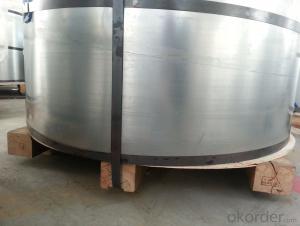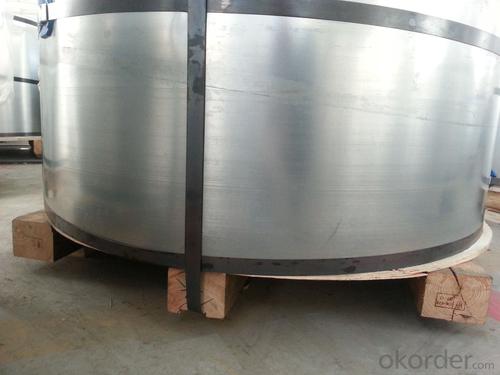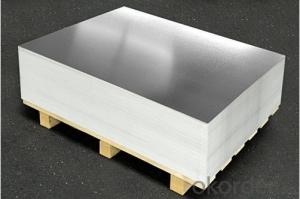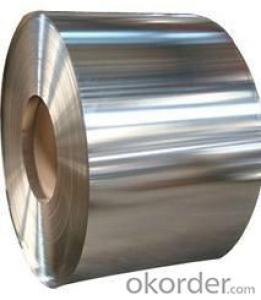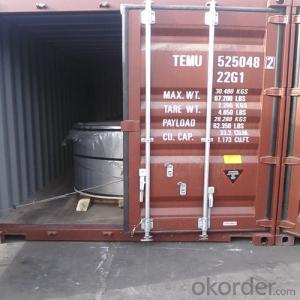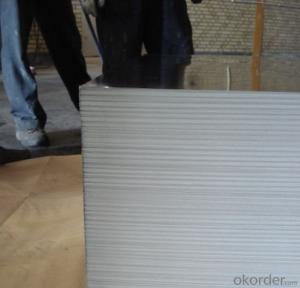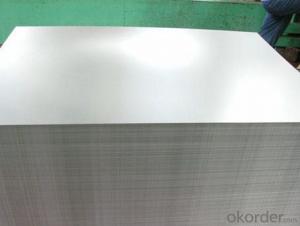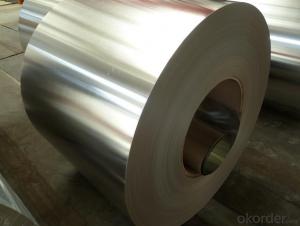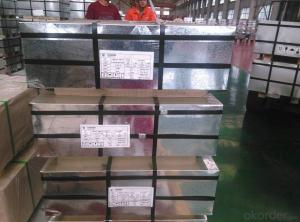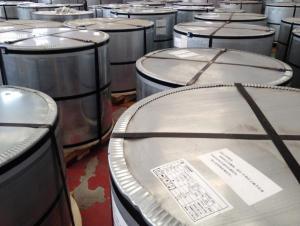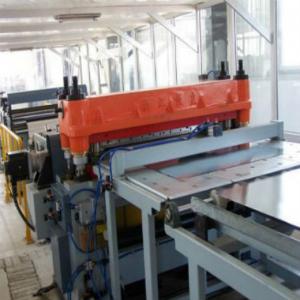Electrolytic Tinplate with SPCC Material
- Loading Port:
- Qingdao
- Payment Terms:
- TT OR LC
- Min Order Qty:
- 25 m.t.
- Supply Capability:
- 30000 m.t./month
OKorder Service Pledge
OKorder Financial Service
You Might Also Like
1.Structure of Electrolytic Tinplate with SPCC Material Description
Electrolytic Tinplate is a thin steel sheet coated by tin. It has an extremely beautiful metallic luster as well as excellent properties in corrosion resistance, solder ability, and weld ability.
2.Main Features of the Electrolytic Tinplate with SPCC Material
Electrolytic Tinplate undoubtedly enjoys the pride of place as a packaging medium especially for food. It owes its unique position to its "nine layer sandwich structure", each of which contributes to its eminence as a packing material. The steel base of electrolytic tinplate provides the necessary strength and formability for can fabrication. The tin-iron alloy layer provides the bond between the steel and free tin layer. The free tin layer is not only responsible for the attractive bright finish and ease of solderability but is also non-toxic- a factor of vital importance in food packaging!
Tinplate is also widely used for making all types of containers such as food cans, beverage cans, and artistic cans, tea cans, painting cans, chemical package cans and dry food package cans, metal printing etc. Its applications are not limited to containers; recently, electrolytic tinplate has also been used for making electrical machinery parts and many other products.
3.Electrolytic Tinplate with SPCC Material Images
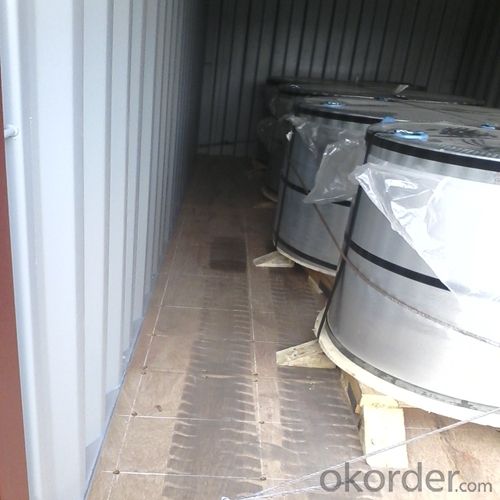
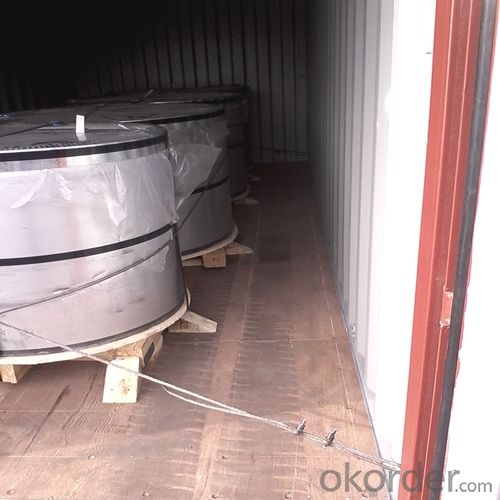
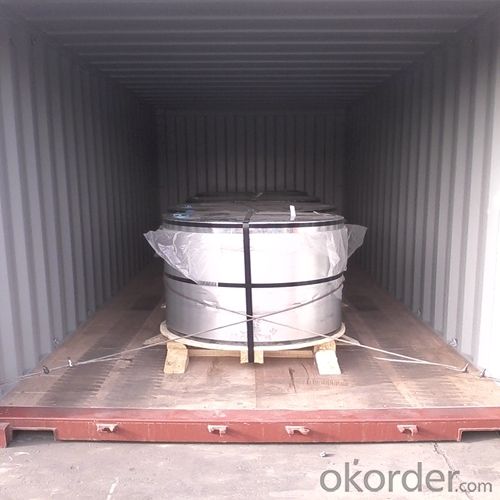
4.Electrolytic Tinplate with SPCC Material Specification
Standard: ISO 11949 -1995
Material: SPCC
Thickness:0.175mm
Width: 600mm
Temper: T4
Annealing:CA
Coil Inner Diameter: 508mm
Weight: 6-10 tons/coil 1~1.7 tons/sheets bundle
Passivation:311
Oil: DOS
Surface: Finish
5.FAQ of Electrolytic Tinplate with SPCC Material
1. What is the delivery time for your prime quality tinplate?
Usually 35 days after order confirmation.
2. What is your Minimum Order Quantity?
Usually MOQ is 50tons for one single size, for trial order, it can be 25 tons.
3. What is the payment term?
The most common we use is L/C at sight or TT. We can also try use other terms.
- Q: How does tinplate contribute to the reduction of food waste?
- Tinplate contributes to the reduction of food waste by providing a protective and durable packaging solution for various food products. Its corrosion-resistant properties ensure the longevity of the packaging, preventing spoilage and contamination. Additionally, tinplate's ability to maintain the freshness and quality of food for an extended period helps reduce waste caused by premature expiration.
- Q: How does tinplate perform in terms of product protection?
- Tinplate performs exceptionally well in terms of product protection. Its strong and durable nature provides excellent resistance against corrosion, ensuring the integrity and longevity of the packaged product. Additionally, tinplate's impermeability to moisture, air, and light further enhances the protection, preventing contamination, spoilage, and damage. Its robustness also helps in safeguarding the product during transportation and handling, making tinplate an ideal choice for preserving the quality and freshness of various goods.
- Q: What are the hygiene benefits of tinplate packaging?
- Tinplate packaging offers several hygiene benefits, including its ability to effectively protect food and beverages from contamination. The non-reactive nature of tinplate helps maintain the quality and freshness of the products, ensuring their safety for consumption. Additionally, tinplate packaging is impermeable to light and oxygen, preventing the growth of bacteria, mold, and other microorganisms that can cause spoilage. The durability and resistance of tinplate also contribute to its hygiene advantages, as it can withstand handling and transportation without compromising the integrity of the contents.
- Q: How is tinplate coated for household appliances?
- Tinplate is coated for household appliances through a process called electrolytic tinplating. The tinplate is first cleaned and then immersed in an electrolyte bath containing tin salts. An electric current is passed through the bath, causing tin ions to be deposited onto the surface of the tinplate, creating a thin layer of tin coating. This coating provides corrosion resistance and enhances the aesthetic appeal of the household appliances.
- Q: Can tinplate be used for high-pressure containers?
- No, tinplate is not suitable for high-pressure containers as it lacks the necessary strength and stability to withstand the pressure.
- Q: What's the advantage of metal containers in packing tea?
- General metal cans are divided into three kinds of tinplate (also known as: tin iron) tin cans, aluminum cans
- Q: What are the factors that affect the cost of tinplate?
- The factors that affect the cost of tinplate include the price of raw materials such as tin and steel, market demand and supply dynamics, production and manufacturing costs, transportation and logistics expenses, currency exchange rates, and any government regulations or tariffs that may impact trade.
- Q: How does tinplate affect the overall product tamper-evident features?
- Tinplate enhances the tamper-evident features of a product by providing a secure and durable packaging solution. Its unique properties, such as strength, rigidity, and resistance to corrosion, make it difficult for tampering attempts to go unnoticed. Additionally, tinplate can be easily sealed, ensuring that any unauthorized access or tampering is immediately visible to consumers.
- Q: How does tinplate compare to aluminum in terms of properties and applications?
- Tinplate and aluminum have distinct properties and applications. Tinplate is a steel sheet coated with a thin layer of tin, making it corrosion-resistant and suitable for packaging cans, containers, and other food-grade products. On the other hand, aluminum is a lightweight and highly malleable metal with excellent corrosion resistance, making it ideal for various applications like aerospace, construction, and electrical conductors. While both materials have their unique advantages, the choice between tinplate and aluminum depends on the specific requirements and intended use of the product.
- Q: Can tinplate be used for signage and displays?
- Yes, tinplate can certainly be used for signage and displays. Tinplate is a versatile material that offers durability, strength, and a smooth surface for printing or painting. It can be easily shaped, cut, and formed to create various signage and display options, making it a popular choice for indoor and outdoor applications. Additionally, tinplate is resistant to corrosion, making it suitable for long-lasting and weather-resistant signage and displays.
Send your message to us
Electrolytic Tinplate with SPCC Material
- Loading Port:
- Qingdao
- Payment Terms:
- TT OR LC
- Min Order Qty:
- 25 m.t.
- Supply Capability:
- 30000 m.t./month
OKorder Service Pledge
OKorder Financial Service
Similar products
Hot products
Hot Searches
Related keywords
